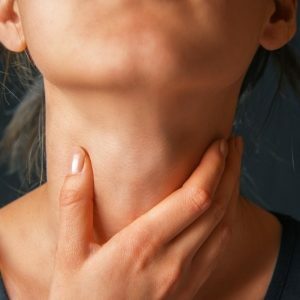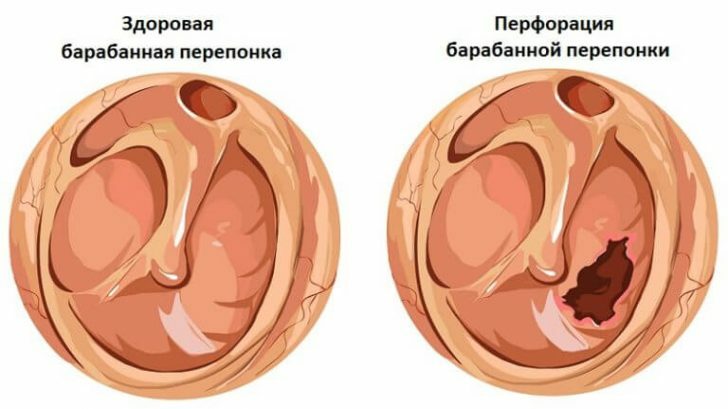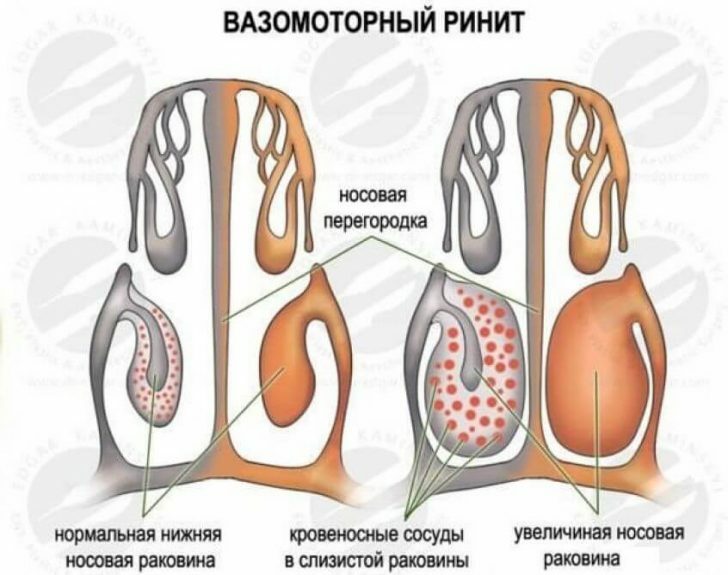Rhinopharyngitis in children: treatment
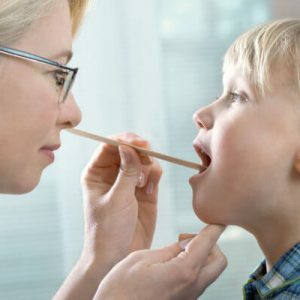 Inflammatory process in a child, which seizes the nasal mucosa and pharynx, is diagnosed in medicine as a rhinopharyngitis.
Inflammatory process in a child, which seizes the nasal mucosa and pharynx, is diagnosed in medicine as a rhinopharyngitis.
In the respiratory process, the nasal cavity plays a huge role: the
- villi of the mucous membrane, which are in constant motion, contribute to the retention of dust in the air;
- mucus glands secrete mucus that moistens the air and disinfects it;
- air in the nasal cavity, inhaled by the baby, is cleansed, moistened and warmed.
Free nasal breathing for a child is important, and if it is difficult, the quality of life will deteriorate.
Causes of rhinopharyngitis
Rhinopharyngitis is nothing more than a reaction of the mucous nasal cavity to a mechanical, bacterial, chemical or thermal stimulus.Most often, doctors diagnose viral and allergic rhinopharyngitis.One-sided rhinitis can develop with a foreign body in the nose of a small child, very rarely physicians mark the progression of isolated inflammation of the pharynx( pharyngitis) or nose( rhinitis), because this pathological process usually spreads to the entire nasopharynx.
Inflammatory agents can be:
- influenza viruses;
- diphtheria bacillus;
- measles virus;
- streptococci;
- Enterovirus infection;
- of the gonococcus;
- rhinovirus infection;
- of staphylococci;
- adenoviruses.
Inflammation can develop ascending( starts in the pharynx and spreads into the nasal cavity) and downward( from the nasal cavity moves to the pharynx) line.This pathological process can spread to the trachea, bronchi, and lungs, and with the immediate connection of the nasopharynx with the middle ear( through the Eustachian tube), otitis often occurs.
The disease is transmitted by airborne droplets, the susceptibility to viruses in children is very high, especially preterm infants and hypotrophics are particularly prone to infection.Rinofaringitis in childhood can occur in acute, subacute and chronic forms.
If you talk about the causes of allergic rhinopharyngitis, it can be food, fungal, household allergens: house dust, pet hair, bird feathers, spores of fungi, food for aquarium fish and so on.The factors that provoke allergic rhinopharyngitis include crowding people in a confined space, irregular airing of premises, air pollution, insufficient intake of vitamins and microelements into the body of the child.
Symptoms of rhinopharyngitis of various forms in the child
Acute rhinopharyngitis
The classic symptom of this form of the disease under consideration is a stuffy nose, accompanied by sneezing.In the nasal cavity, the child accumulates mucus secretions, which causes difficulty in feeding - the baby every 2-3 throats is forced to let go of the chest and inhale.The result of this "interrupted" feeding is shortage and / or weight loss.Difficulties with breathing cause trouble for the baby, he often cries, sleep is disturbed.
At the beginning of the development of acute rhinopharyngitis, clear and liquid discharge comes from the nose, then they become thicker, mucous, in some cases purulent discharge comes from the nose, very rarely there is an admixture of blood in the mucous secretions in the form of thin veins-fibers.Around the nasal passages, the child has reddening - this is the result of irritation of the delicate skin with a mucus and a handkerchief / napkin that the parents are constantly wiping.Acute rhinopharyngitis is very hard to tolerate by young children, because their breathing is difficult, and if in the posterior nasal cavity stagnation stagnates, it dries up and narrows the already swollen nasal passages, which leads to the complete absence of nasal breathing.
In older children, acute rhinopharyngitis is characterized not only by nasal congestion, but also by throat pain, swallowing pain, headache and body aches.Often, patients complain of ear congestion and hearing loss, and this may indicate a beginning inflammation of the Eustachian tube.With such an extensive and rapid progression of the acute form of the disease in question, cervical and submandibular lymph nodes will necessarily be increased, the voice of the patient acquires a nasal hue.
Note: acute rhinopharyngitis often occurs against a background of increased body temperature.In young children, even low-grade indicators can provoke a convulsive syndrome, which should be treated by qualified doctors.
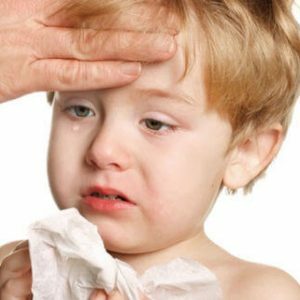 Since rhinopharyngitis is an inflammation of not only the nasal cavity, but also the throat, the characteristic symptom of the disease is also a cough that will develop according to the classical pattern: at the beginning of the disease - dry, then - wet with sputum discharge.Acute pharyngitis provokes the release of a large amount of mucus that flows down the back wall of the pharynx and can provoke vomiting in the child.In some cases, in addition to vomiting, the patient has diarrhea and bloating, but this does not refer to the characteristic symptoms and is not taken into account in the diagnosis.
Since rhinopharyngitis is an inflammation of not only the nasal cavity, but also the throat, the characteristic symptom of the disease is also a cough that will develop according to the classical pattern: at the beginning of the disease - dry, then - wet with sputum discharge.Acute pharyngitis provokes the release of a large amount of mucus that flows down the back wall of the pharynx and can provoke vomiting in the child.In some cases, in addition to vomiting, the patient has diarrhea and bloating, but this does not refer to the characteristic symptoms and is not taken into account in the diagnosis.
Acute rhinopharyngitis often occurs with exacerbations and, in addition to otitis media, it can be pneumonia or bronchitis.A particularly dangerous complication for young children is the inflammation of the vocal cords, which requires the provision of emergency medical care.
If the acute form of the disease under examination proceeds without complications, then recovery occurs after 7 days, in rare cases, there may be a wave-like course of the disease, when its symptoms fade away, then manifest with greater intensity.
Chronic rhinopharyngitis
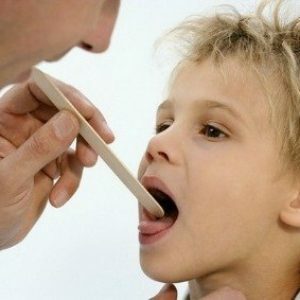 It is characterized by a prolonged course, is the result of inadequate treatment of the acute form of rhinopharyngitis.Factors that contribute to chronic inflammation are tonsillitis, sinusitis, caries and other foci of chronic infections in the body.In medicine, three forms of chronic rhinopharyngitis are distinguished: catarrhal, atrophic and hypertrophic.
It is characterized by a prolonged course, is the result of inadequate treatment of the acute form of rhinopharyngitis.Factors that contribute to chronic inflammation are tonsillitis, sinusitis, caries and other foci of chronic infections in the body.In medicine, three forms of chronic rhinopharyngitis are distinguished: catarrhal, atrophic and hypertrophic.
In chronic inflammation of the nasal cavity and pharynx, all unpleasant sensations in the throat( described above) are preserved even during treatment, the child may have a pronounced hoarseness and sore throat.Discharge from the nose will be mucous or purulent, the patient is disturbed by a dry cough, but in the morning hours, sputum may appear with another attack of cough, which often provokes vomiting.Tonsils in the pharynx become loose and enlarged, larger sizes and lymph nodes on the posterior and lateral walls of the pharynx become larger.
Allergic rhinopharyngitis
Most often this type of the disease under consideration is manifested in the summer when the flowering period of grasses and trees begins.Only by clinical signs, allergic rhinopharyngitis is practically impossible to differentiate from viral and bacterial. Symptoms of allergic rhinopharyngitis:
- sharply stiff nasal congestion due to extensive mucosal edema;
- Lachrymation and redness of the eyelids;
- cough;
- abundant discharge of mucus from the nose;
- difficulty in breathing;
- itching and burning in the eyes and nasal passages;
- a sore throat.
All of the above manifestations of allergic rhinopharyngitis decrease as soon as contact with the allergen ceases, and this already serves as a hallmark of the disease.
Note: allergic rhinopharyngitis does not pose a risk to the life of the child, but it is still necessary to deal with it.The fact is that a prolonged course of the disease leads to the development of an asthmatic state.
Treatment of rhinopharyngitis in children
Most often, the treatment of the disease in question is carried out on an outpatient basis, but if the doctor insists on placing the sick child in the hospital, you should not refuse. If a child is diagnosed with a viral rhinopharyngitis, he will be prescribed drugs with an antiviral effect:
- Anaferon( approved for admission from 1 month of life);
- Oxoline ointment;
- Amiksin( contraindicated in children under 7 years of age);
- Interferon;
- Viferon gel.
Antiviral drugs should be used in the treatment of rhinopharyngitis in the first three days of the disease. There are some peculiarities in the use of these agents:
- Interferon can be used to treat a child at any age as a nasal or inhalation;
- Anaferon for children under 2 years old must be dissolved in a small amount of water, older children simply dissolve the pill in the mouth;
- Amiksin is used in the form of tablets;
- Oksolinovoy ointment and Viferon lubricate the mucosa in the nasal passages, these drugs are allowed to apply even to newborn children;
- Viferon lubricate the tonsils with a tampon.
To restore the breathing of a sick child, doctors prescribe a 1% solution of Protargol 4 drops in each nasal passage twice a day.For the same purpose, solutions of Rivanol and Ephedrine, Galazoline( from the age of three), Pharmazoline( from the age of six) are used.These drugs belong to the group of vasoconstrictors, they should be prescribed by the attending physician, and parents should not exceed the recommended dosage in order to avoid complications.
Note: is often used by parents to facilitate breathing in a child with drops of menthol, but they are categorically contraindicated for children under 3 years old.And in general, drops with menthol children should be used very carefully, since these drugs can provoke spasm of vocal cords and cramps.
Recommendations given by physicians regarding the treatment of rhinopharyngitis in children :
-
 should be regularly done by washing the nose with physiological saline;
should be regularly done by washing the nose with physiological saline; - effective are periodic suction of mucus from the nasal cavity - this will facilitate breathing;
- skin in the nasal passages should be lubricated with petroleum jelly - this will prevent the appearance of redness and irritation;
- indoors, it is necessary to provide air humidification, the room in which the sick child is - to ventilate regularly;
- if the sick child has a fever, then it should be given an antipyretic agent - for example, Nurofen, Paracetamol, suppositories with Analgin and Dimedrol;
- for sore throats, rinses with sea salt, furatsilinom, broths of medicinal plants( sage, calendula, chamomile pharmacy);
- if the child does not know how to gargle, then it can be inhaled with a soda solution or mineral water;
- To save an older child from pain and perspiration in the throat, tablets Strepsils, Decatilen, Isla-mint, which you just need to dissolve in your mouth, can be used.
Note: does not apply antibiotic drugs in the treatment of rhinopharyngitis( except for the variants of attachment of the secondary bacterial flora).
Treatment of allergic rhinopharyngitis
Treatment of this type of the disease should be strictly according to the prescription of the doctor, and a prerequisite for obtaining a therapeutic effect is the removal of contact with the allergen, or limiting its effects. As a medical treatment for allergic rhinopharyngitis, doctors use:
-
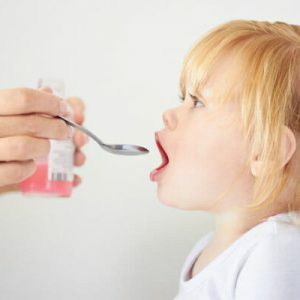 Allergoodil( prescribed from the age of 12), Sanallergin( allowed from the age of two years), Vibrocil( approved for use at any age) - drops in the nose;
Allergoodil( prescribed from the age of 12), Sanallergin( allowed from the age of two years), Vibrocil( approved for use at any age) - drops in the nose; - Tavegil, Gismanal, Clarinase - general-purpose antiallergic drugs;
- Fliksonase, Dexarinospray - nasal drops with corticosteroids, used only for severe allergic rhinopharyngitis;
- antiallergic immunoglobulin and histoglobulin - are prescribed outside the period of exacerbation of the disease in question, the doctor makes an individual scheme for a particular child.
Note: against a background of allergic rhinopharyngitis in a child may develop a dysbacteriosis.In order to eliminate it, the doctor can prescribe various sorbents( Carbolong, Enterosgel), which contribute to the rapid elimination of the allergen from the body.
Folk remedies
Of course, the use of folk remedies in the treatment of allergic rhinopharyngitis should be agreed with the attending physician.But to try these methods of treatment is worth it, since in many cases this gives a positive effect.
The most common folk recipes for the treatment of allergic rhinopharyngitis:
- Beet juice can be used for instillation into the nasal passages, it will help quickly and for a long time to get rid of stuffing, remove the swelling of the mucosa.The Kalanchoe juice, previously diluted with warm water in a 1: 1 ratio, needs to rinse the throat, it can also be digested and in the nose - the plant has a powerful anti-inflammatory effect.
- Prepare the calendula juice, dilute it with warm water in the proportion of 500 ml of water per 1 tablespoon of the juice of the medicinal plant.A ready-made product needs to be cleaned with nasal passages, the procedure should be performed over a sink or some kind of utensil, since rinsing implies free flowing of the drug outwards.
- Mix the juice of onions with lemon juice and honey in equal proportions and dig in the nasal passages in the first days of the disease - the swelling of the mucous membrane will quickly disappear, the progression of the inflammatory process will be inhibited.
Please note: honey and lemon are food allergens, so before using them, make sure that the child does not have an allergy specifically to these foods.Otherwise, the condition of the patient will deteriorate sharply, Quincke's edema and anaphylactic shock may develop.
- When coughing, children can be given to drink herbal infusions, which are prepared from mother-and-stepmother, althaea, elecampane, licorice roots or plantain.Mix all these medicinal plants is not necessary, the infusion is prepared from one kind of raw material according to the classic recipe: 1 tablespoon of raw material per glass( 250-300 ml) of boiling water, it is insisted 20-30 minutes, filtered.Take such infusions should be 1-2 tablespoons three times a day.
Preventative measures
When a child is sick, it is always a problem for the patient himself and his parents. In order to prevent the occurrence of rhinopharyngitis in children, certain preventive "measures" should be carried out regularly:
- Walking in the fresh air, air baths, fitting clothes in accordance with the temperature regime of air - this will increase the overall resistance of the child's organism to infections.
- Elimination of the child's contact with sick people.If this is not possible, then Oxolin ointment and / or Interferon can be used for prophylactic purposes.
- Teach a child to breathe through the nose.In the presence of adenoids that obstruct nasal breathing, contact the otolaryngologist and fully cure them.
- Any foci of chronic infections, as well as helminthic invasions and dysbiosis, must be treated on time and under medical supervision.
- If the child is allergic to any stimulus, then you need to exclude him from life, follow all the recommendations of the treating doctor about the nutrition and treatment of the baby.
Rhinopharyngitis is often perceived by parents as a common cold.In fact, this disease poses a certain danger to the health of the patient - with prolonged flow, absence of treatment, severe complications can develop.Therefore, parents should apply for qualified medical care when the first symptoms of rhinopharyngitis appear in the child.
Tsygankova Yana Aleksandrovna, medical reviewer, therapist of the highest qualification category

